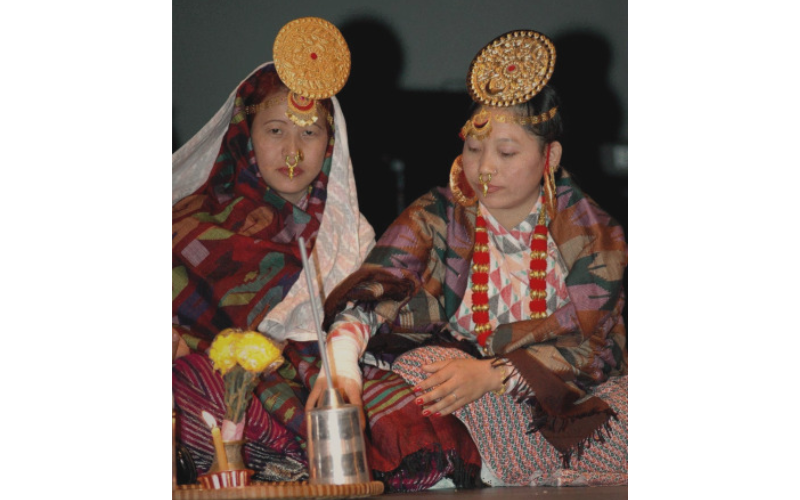High in the mist-shrouded hills of eastern Nepal, Sikkim, and Darjeeling, a unique and heart-warming drink has long been part of everyday life — Tongba, a traditional millet-based fermented beverage. Served in a bamboo vessel and shared among friends beside a fire, Tongba is more than a drink; it is a symbol of hospitality, community, and Himalayan identity.
What Is Tongba?
Tongba (pronounced tong-bah) is a traditional millet beer originating from the Limbu people of eastern Nepal. It is made from finger millet (kodo), which undergoes a natural fermentation process to produce a mildly alcoholic, cloudy, and slightly tangy beverage.
Interestingly, the term Tongba refers both to the bamboo container in which the drink is served and, colloquially, to the brew itself. The drink is sometimes described as millet beer or kodo ko jand in Nepali, although regional names vary.
The Process of Preparation
The preparation of Tongba is both simple and time-honoured. First, millet is boiled, cooled, and then mixed with a natural fermentation starter, known as khesung among the Limbu and murcha in other parts of Nepal. The mixture is left to ferment for several days until it develops a distinctive yeasty aroma and tangy taste.
Once fermentation is complete, the mixture may be stored for several weeks to deepen its flavour — although in many households, it is consumed fresh. The final fermented millet is known as mandokpenaa thee in the Limbu language.
How Tongba Is Served
When ready to drink, the fermented millet is placed into a hollow bamboo vessel — the Tongba itself. Boiling water is poured over the millet, and after a few minutes of steeping, the warm liquid is sipped through a bamboo or metal straw fitted with a tiny filter at the base to keep the grains out.
The same millet can be topped up with hot water several times, each refill yielding a lighter, smoother flavour until the taste eventually fades. The typical alcohol content of Tongba ranges between 2 and 5 per cent ABV, depending on the length and conditions of fermentation.
A Cultural and Social Tradition
Tongba holds a cherished place in Himalayan culture. Among the Limbu, Rai, and other Kirati communities, it is served as a gesture of hospitality and friendship. Offering Tongba to guests is a sign of respect, warmth, and goodwill.
It is also an integral part of festivals, rituals, and social gatherings, especially during the cold winter months. Shared communally around the hearth, Tongba brings people together — a slow, comforting experience that reflects the rhythm of life in the hills.
The Experience of Drinking Tongba
Drinking Tongba is as much a ritual as it is refreshment. The warmth of the bamboo vessel in your hands, the earthy scent of fermented millet, and the gentle rising steam all contribute to its charm. The first pours are rich and tangy, while later refills grow milder and subtly sweet.
Although mild in strength, the drink provides a pleasant, lingering warmth — making it ideal for the crisp mountain evenings of Nepal and Sikkim.
Sustainability and Heritage
Tongba is also a testament to eco-friendly tradition. Its main ingredients — millet, bamboo, and water — are local, renewable, and sustainable. The process requires no chemicals or industrial equipment, and the vessels are traditionally biodegradable.
In some modern settings, Tongba may be served in wooden or metal containers, but the bamboo vessel remains the most authentic and iconic form.
A Taste of the Himalayas
For travellers visiting Nepal, tasting Tongba is a memorable cultural experience. Whether enjoyed in a rural homestay or a mountain café, each sip offers a genuine connection to Himalayan heritage — a meeting of flavour, tradition, and warmth.
Tongba is more than just a traditional beverage. It represents the Himalayan way of life: simple, sustainable, and rooted in community. Each bamboo cup tells a story — of shared laughter, mountain hospitality, and generations who have passed down this living tradition.
PC:Wikimedia Commons
Also Read